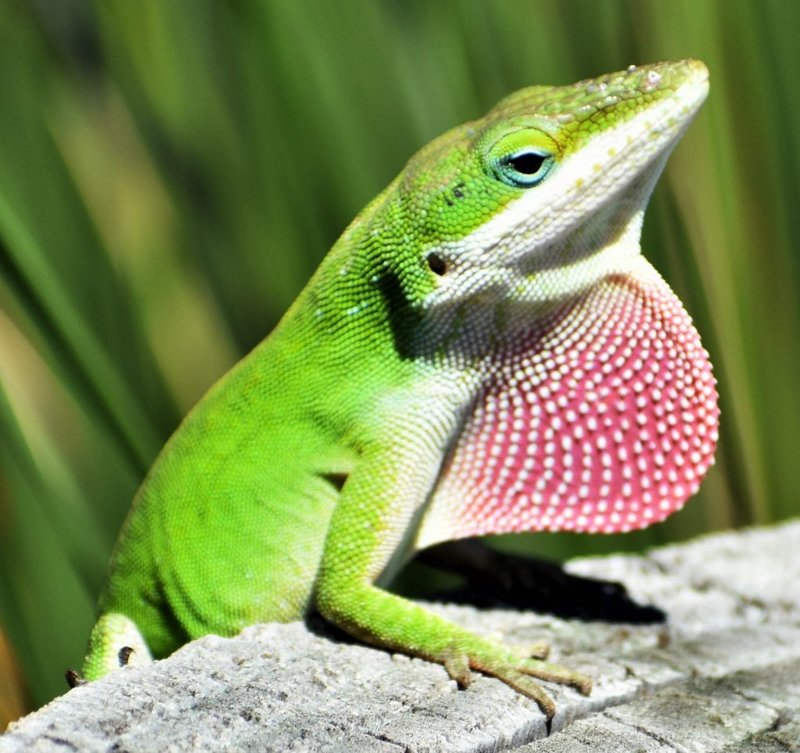
You might think of anoles as the cousins of the more commonly known gecko, but they have their unique quirks. With their ability to change color and their charming head-bobbing displays, anoles are small wonders of the natural world. If you’re curious about how to identify an anole lizard in the wild, I’ll guide you through the key features, habitats, and tips for spotting them, making your next outdoor adventure a bit more exciting!
Characteristics of Anole Lizards
Identifying an anole lizard starts with recognizing its key physical traits. Most anoles are small, usually measuring between 5 to 8 inches in length. One of the standout features is their long, slender bodies and slightly flattened heads. They come in a variety of colors, from green to brown, and even a mix of shades, allowing them to blend seamlessly into their environments.
One of the most fascinating aspects of anoles is their ability to change color, primarily for camouflage. You might see them shift from bright green when they’re on a leafy branch to a dull brown when resting on tree bark. This color change isn’t just for show; it helps them avoid predators and regulate their body temperature. Imagine wearing a cloak that changes based on your surroundings—pretty nifty, right?
Another key characteristic is their dewlap, a flap of skin under the throat. Males use this colorful extension in courtship displays and to assert dominance. If you spot a male anole puffing up this dewlap and bobbing his head, he’s definitely trying to impress!
Common Species of Anole Lizards
In the wild, you’ll mainly encounter a few common species of anoles. The most prevalent is the green anole (Anolis carolinensis), often found in the southeastern United States. This vibrant green lizard is easy to identify because of its bright hue and long tail. They’re often spotted basking in the sun or perched on branches.
Then there’s the brown anole (Anolis sagrei), which is more invasive and can be found in various areas, including the Bahamas and parts of Florida. These lizards typically have a more muted coloration but can display various patterns. Brown anoles are often seen scurrying across the ground, so keep a keen eye at your feet!
Lastly, the Cuban brown anole (Anolis sagrei) is another species you might come across, especially in Florida. This lizard shares many traits with its relatives but is generally larger and has a more robust body. Knowing the differences between these species can enhance your experience while observing them in their natural habitats.
Habitats Where Anoles Live
Anole lizards love warm climates and can be found in a variety of habitats. They prefer wooded areas, gardens, and even urban environments, making them quite versatile. You’re likely to spot them resting on tree branches, bushes, or even fences as they soak up the sun.
If you’re looking for anoles, consider checking places with plenty of greenery. They often thrive in environments with abundant vegetation where they can easily hide from predators. Areas with flowers, shrubs, and low-hanging branches are hotspots for these little lizards. Just remember, they’re masters of disguise!
It’s also worth noting that anoles are diurnal, meaning they’re active during the day. So, if you’re out and about in the early morning or late afternoon, you might catch them basking or hunting for insects. Keep your eyes peeled!
Behavioral Traits of Anoles
Understanding anole behavior can help you identify them better. These lizards are known for their agility and quick movements. They can dart up trees and leap across gaps with impressive speed. If you see a lizard scurry away quickly, it might just be an anole trying to escape a potential threat.
One of the more charming behaviors to observe is their head bobbing. Male anoles often bob their heads up and down to communicate with others. It’s a courtship display and also a way to show dominance. If you see a little lizard jumping around energetically, it’s likely trying to attract a mate or assert its territory. And trust me, it’s a sight worth watching!
Anoles are also quite curious and will often explore their surroundings. If you’re out in the wild, stay still for a moment; you might just see a little anole inching closer to investigate you. It’s both adorable and fascinating to watch!
Tips for Spotting Anole Lizards
Now that you know what to look for, let’s talk about how to actually spot these remarkable creatures in the wild. First and foremost, blend into your environment. Try wearing muted colors; bright clothing can scare them off.
Timing is crucial! Your best chance of seeing anoles comes on warm, sunny days when they’re most active. Aim for late morning or early afternoon—perfect time for some sunbathing! Stand still or move slowly to avoid startling them as they bask or forage.
Listening can also be key. Sometimes, you might hear the soft sounds they make, especially males making calls to attract mates. If you’re really keen, try approaching areas with dense plants or flowers. Anoles love to hang out around these spots, so patience is your friend.
Identifying an anole lizard in the wild can be a delightful adventure. Whether you’re in your backyard or exploring a local park, these little lizards are often just a glance away. Remember to look out for their vibrant colors, distinctive dewlaps, and agile movements.
Next time you’re outdoors, take a moment to appreciate the beauty of these fascinating creatures. You might just find yourself captivated by their charm and agility, making your outdoor experiences even richer. Happy lizard spotting!

